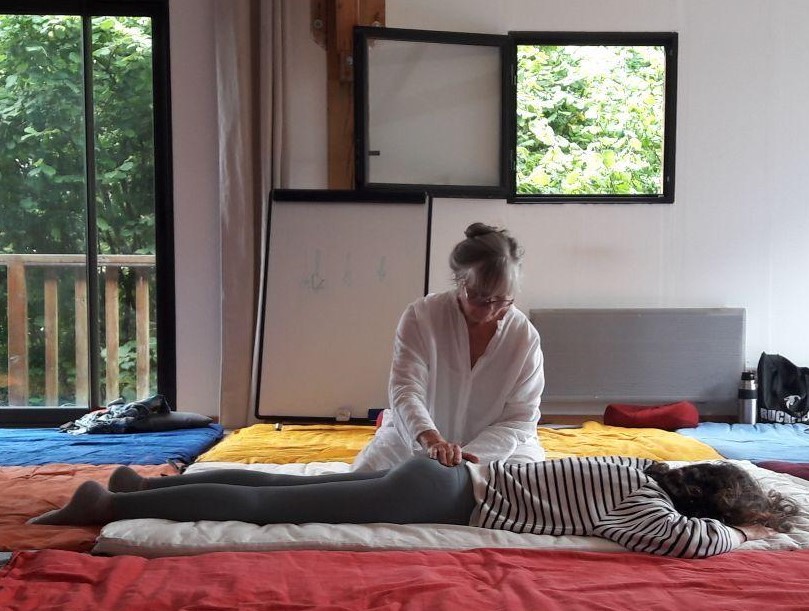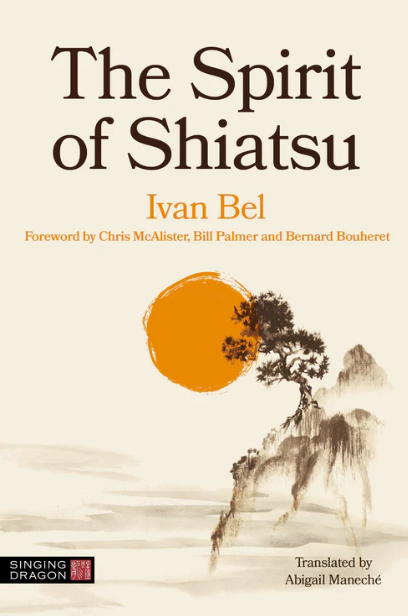Not « a pioneer woman » ? Maybe. Carola Beresford-Cooke was nevertheless introduced to Shiatsu in 1978 by Ohashi, was one of the founding members of the ShiatsuSociety UK, and has been known since 1996 as the author of « Shiatsu Theory and Practice » (1), a work that for decades has been an essential reference in the world of Shiatsu. Listening to this renowned practitioner and teacher recount her incredible journey is like leafing through beautiful pages of the blossoming of our discipline in Europe.
François-Olivier Louail : Hello dear Carola. It is a great honor to welcome you and to be able to do this interview with you. If you don’t mind, let’s start at the beginning. Where are you from ? When were you born ?
Carola Beresford-Cooke : I’m not sure where I am from ! I was born in 1947 to English parents, in London, but much of my childhood was spent in the Far East – Malaysia, Singapore, Bali, Java, Sri Lanka. Then I spent much of my adult life in London before moving to Wales where I am living now.
In what environment did you grow up ? Were there elements in your family, or around you, that predisposed you to turn one day to Shiatsu ?
I think my journey into the world of Shiatsu began in my childhood fascination with the mystery of consciousness and its relationship with the body.
My childhood was overshadowed by a rigid and authoritarian father: doctor, colonel, intellectual. In the Far East I encountered « mysteries » that my father’s medical outlook could not explain. I particularly remember the procession at Thaipusam in Singapore, where men paraded in trance to the din of gongs and drums, seeming not to feel the great hooks threaded through their flesh or the spikes driven through their tongues. I knew then that there were areas of human experience that didn’t fit with established beliefs. Perhaps I also became familiar with East Asian ways of thinking around this time; nothing mystical, just the comfortable integration of myth, symbol and spirit into daily life that I found in my cheerful and pragmatic teachers of Chinese brush-drawing and Indian and Balinese dance.
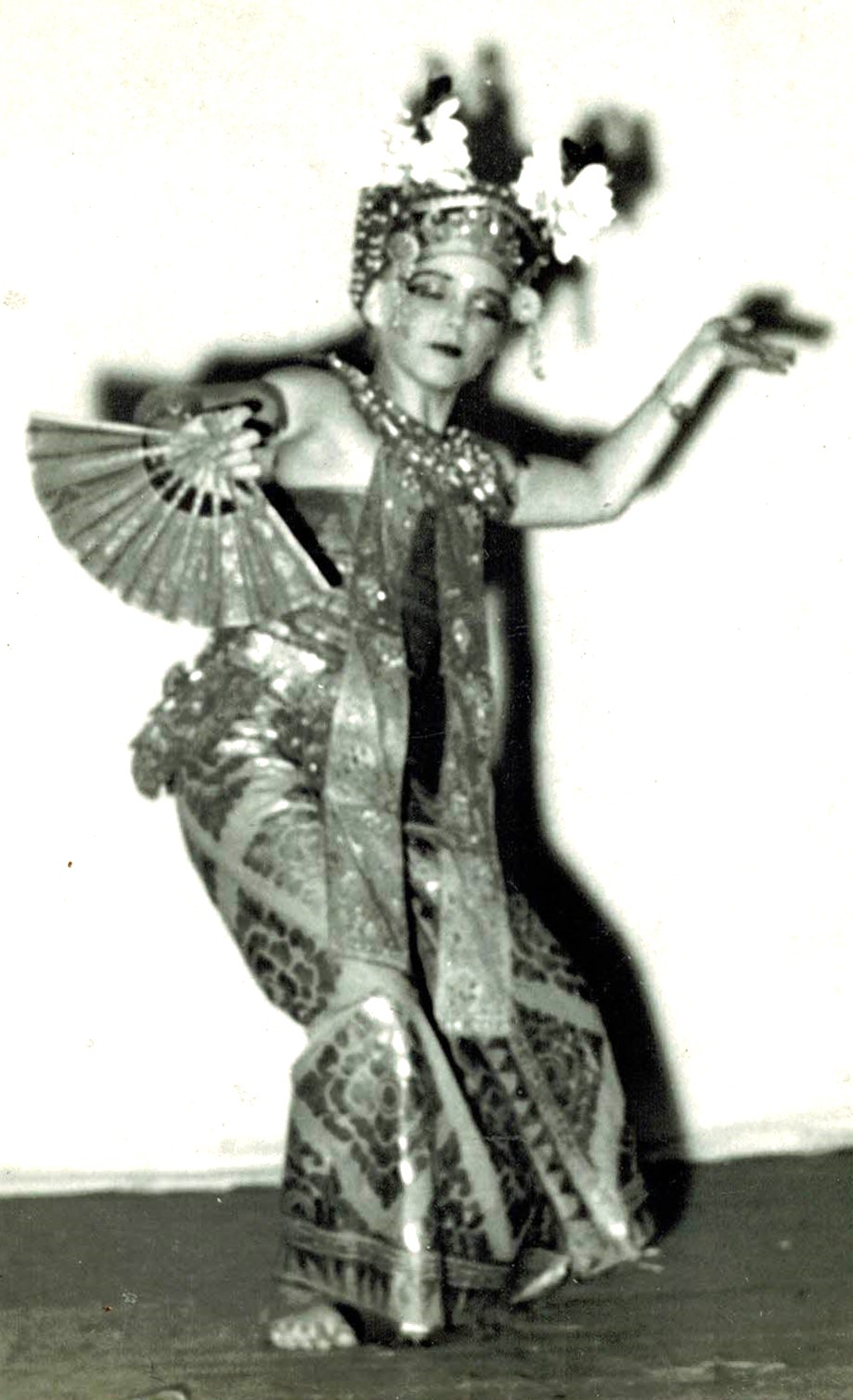
What was the turning point that made you want follow this path ? What particularly attracted you ?
I originally wanted to be a doctor, like my father, but he forbade it. At university I discovered that I loved to beautify my friends before a ball, dressing their hair and applying cosmetics, a realisation that guided me later. I abandoned all the academic plans my father had for me and went to manage a fashionable bistro in Chelsea, London. But I knew I needed to train for a career and I remembered how I had really enjoyed that beautifying activity, so I took a year’s course in Beauty Therapy. I was fascinated by anatomy and physiology, but it was the massage tuition that astonished me. I felt that my body was for the first time whole and comfortable, not something to be observed, judged and punished. This was in the mid-Seventies and the revolution of complementary medicine was just beginning. I knew there was a bodywork version of acupuncture and, remembering the Thaipusam procession, I wanted to explore that magical area. I was definitely heading for Shiatsu! I remember seeing a small card pinned up in my local health food shop, advertising an Ohashi workshop and I enrolled instantly : that moment was pivotal for me and I remember it so clearly.
Where did your training take place ? Who were your Masters ?
My first workshop was in 1978, with Ohashi on, I think, his second tour of Europe. I then did the same routine he taught us for the next several years, on hundreds of different people. I count those years as some of the most valuable in my Shiatsu journey, as my hands learned all the different shapes and sizes of body, and more importantly discovered eventually what felt okay and what didn’t. At that first workshop I sat next to Michael Rose, who already knew Shiatsu and had been practising for several years and we became friends. Michael went to Japan for a year to study with Masunaga and when he came back, he obviously knew even more and hosted Shiatsu gatherings every Tuesday morning in his small London flat. There I met Bill Palmer (2), Elaine Liechti (principal of the Glasgow School and author of several Shiatsu textbooks) (3) and many others. We knew very little, but we learned a lot from each other. Michael Rose has his own sensitive but bear-like style. He is a very under-rated master, in my opinion. Through him I met Yuichi Kawada (4) and also had the opportunity to attend a seminar with Masunaga in Paris. Subsequently I studied at workshops in London with Rex Lassalle, Susan Krieger (a follower of Shizuko Yamamoto (5) of the Barefoot Shiatsu style) Kishi (6) (briefly) and in France with Ryokyu Endo (7). My principal teacher was Pauline Sasaki, from 1985 till 1992, when I stopped my Shiatsu training to have a baby. When I started again, Pauline had moved on and I could no longer follow what she was doing ! And of course I have studied with my colleagues with whom I have co-taught over the years, Paul Lundberg (8), Cliff Andrews, Elise Johnson (Shiatsu for children) and Nicola Ley. I studied most recently with Nicola on her Lightbody style, derived from her continued work with Pauline. I finally caught up with Pauline !
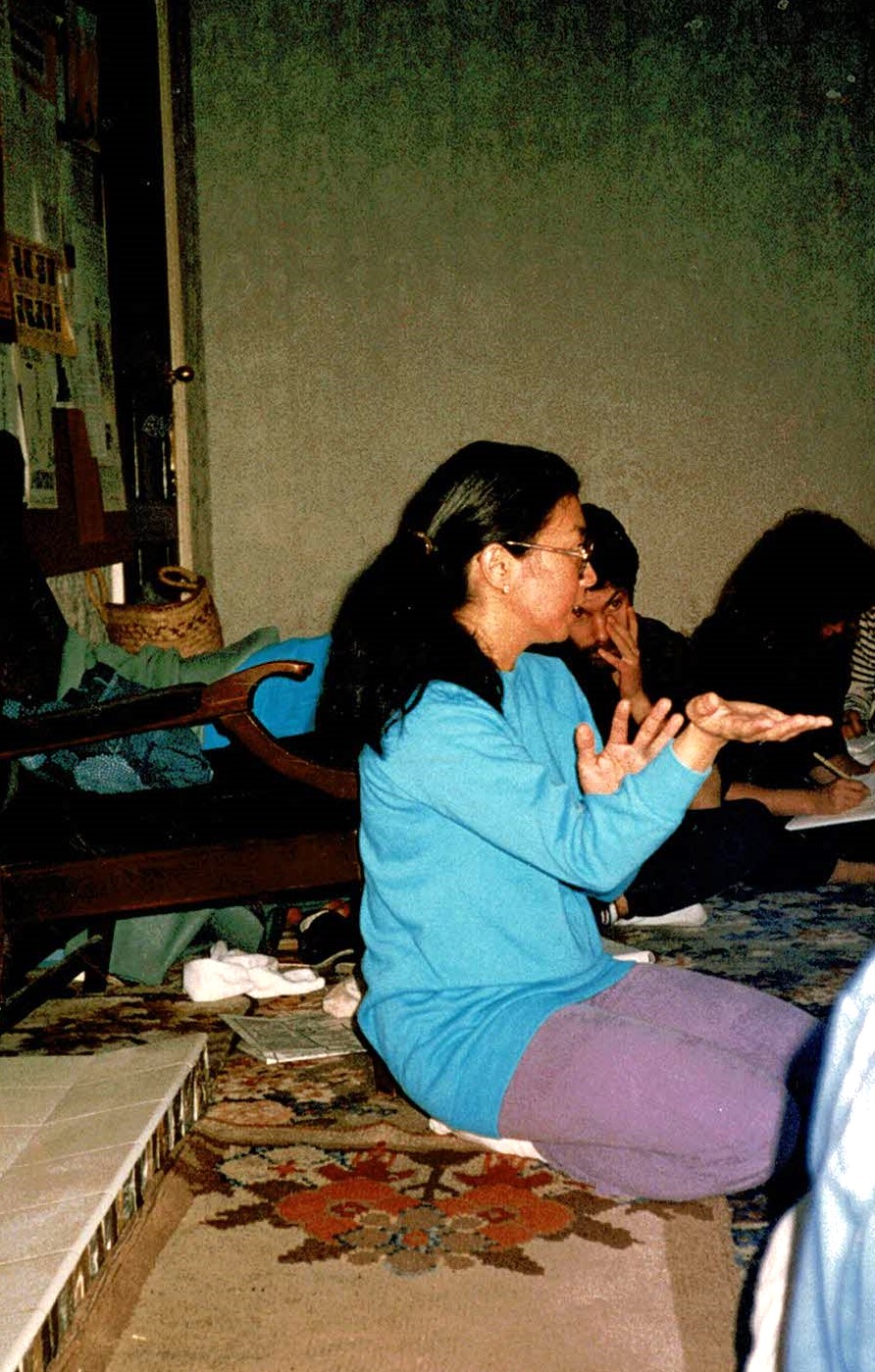
I would include my acupuncture training as part of my Shiatsu training – Shiatsu has always been my principal discipline, but acupuncture has helped me with it. I studied first with the Worsley school at Leamington – disappointing, but I learned to look and listen and absorb signals from my receptors, and I learned bout points. Most beneficial was a course led by Giovanni Maciocia, Julian Scott and Peter Deadman, who had just returned from China, and I learned so much more from them. Giovanni Maciocia, of course, has influenced a generation of East Asian medical practitioners with his books, which de-mystified Chinese medicine for the first time.
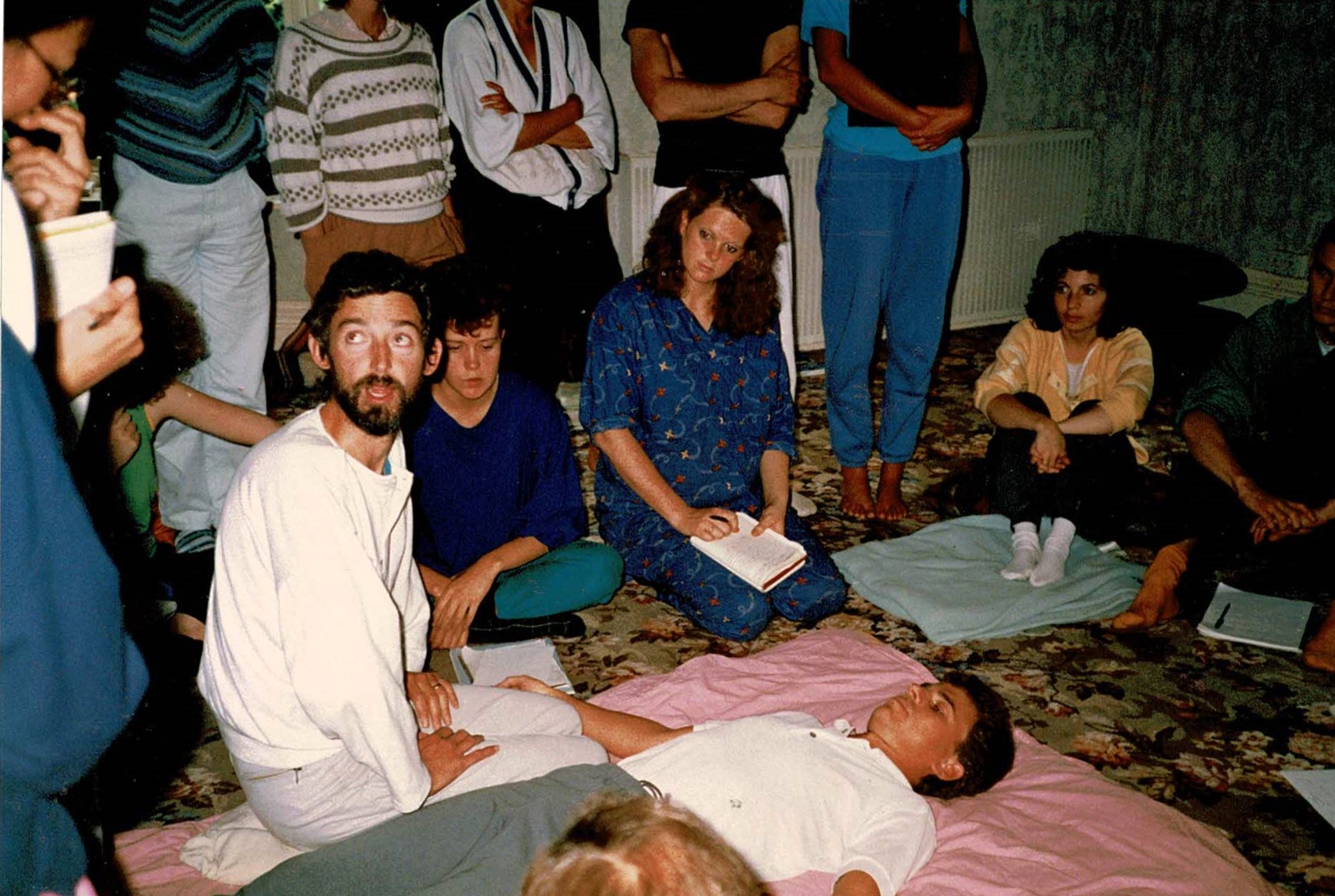
What kind of memories do you remeber ?
Many of my experiences with various teachers were quite short. Shiatsu in the UK was not like it is today, with extended courses and professional trainings. My first workshop with Ohashi made a big impression on me. It became quite unfashionable to like Ohashi’s work at a certain point in the UK – but he is a great showman and had a huge influence in the West. We owe him for having all started our firts Shiatsu lessons crawling like babies. And I like his emphasis on the comfort of the Shiatsu-giver. He used to be very funny. I remember him saying to a man he was demonstrating Ampuku on, « You recently divorced, I think » and the man was goggle-eyed at this psychic ability and gasped « How did you know that ? » and Ohashi chortled « Not changed underwear ! » indicating the man’s slightly grubby waistband.
My memories of Masunaga – I was lucky enough to be chosen to be a model for him. I sat in seiza on the side of the stage for an hour while he paced back and forth, lecturing on Shiatsu theory in his rather bad English, and finally, right at the end he said « Now I show on this woman Two Hands as One » and gripped my arm firmly with both hands. That was it, my modeling. My favourite part of the seminar with Masunaga, which lasted a week and where I didn’t really understand much, was an afternoon where he told us he had once wanted to be a beautician, and taught us to give face Shiatsu. I remember him saying « Shiatsu for face is not only good for soul but make very beauty ». He writes about this in « Tales of 100 Treatments » (9) – apparently he was so exhausted by this long seminar that he just wanted to get away from theory and diagnosis and teach something simple. Well, we loved it.
Pauline was a whole other thing. Teachers before her had showed us techniques and talked about the theory, but the two didn’t marry up. Pauline worked directly with Ki and she talked about her experience while she was working, giving us her images and sensations. She was practical and straightforward and she clearly didn’t care about her status; she metaphorically « got out of the way » and let us see what was happening to the receiver under her hands, explaining as she went along. She also gave us Masunaga’s meridian theory, stripped of philosophy, just the essentials for practical Shiatsu. For the first time the theory was no longer mystifying, and I could see how one could engage directly with Ki. Every workshop was electrifying and full of new insights.
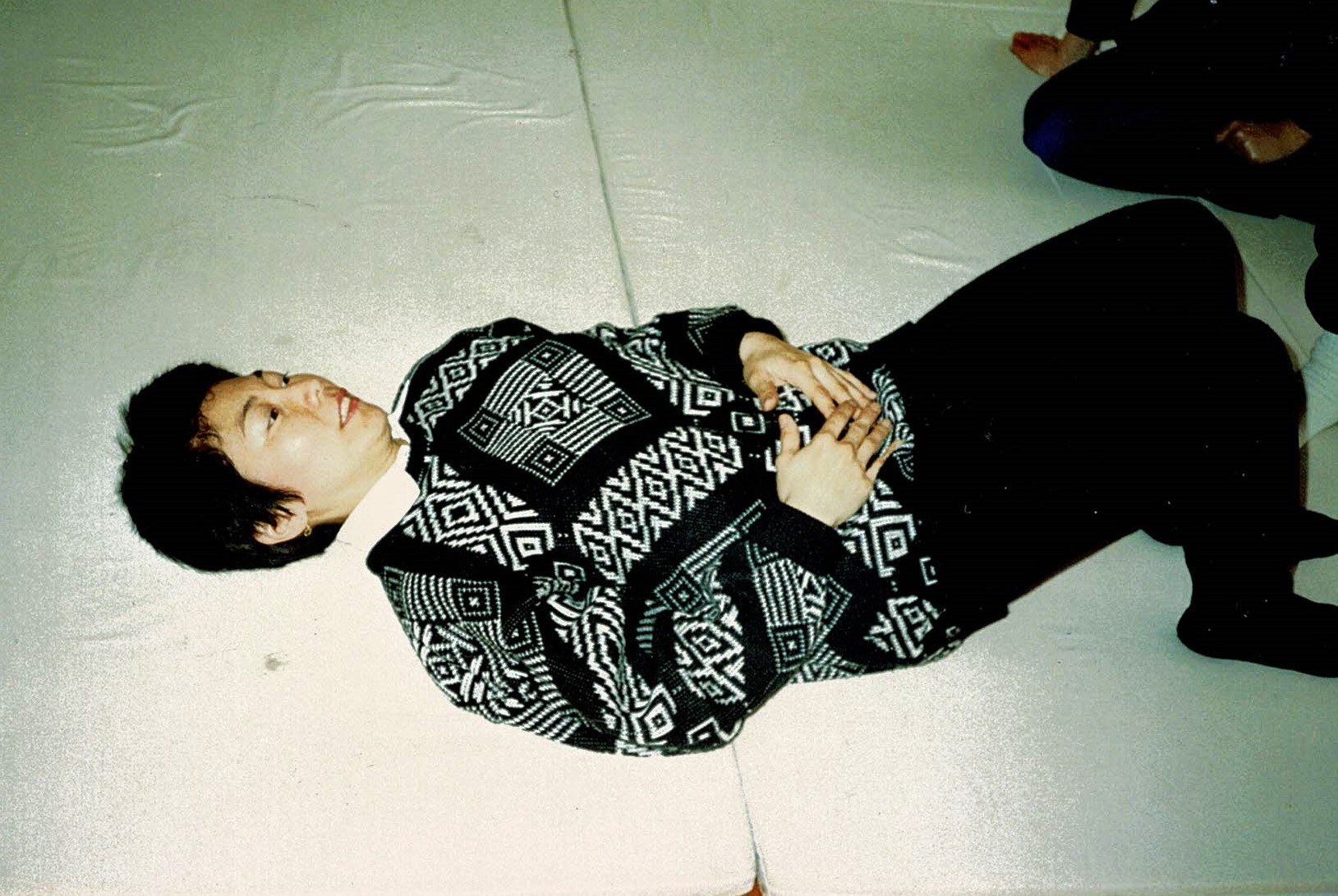
Could you describe the spirit of the times, especially as a woman. Was the study and practice of Shiatsu very open to women ? Is it different today ?
The study and practice of Shiatsu has always been open to women ! It is in teaching and owning of schools where women encounter problems, possibly partly because of the demands of home and children. I see that on your website, Ivan, there is only one interview with a woman (10), and so many with men. But I think that women are on the whole less confident with teaching, they often prefer the individual healing encounter. It is a shame, as there is now a majority of women in classes. When I started there were more men, as they often came to SHIATSU through their martial arts training. Macrobiotics was also a huge influence and there were many men in that movement who studied SHIATSU alongside the dietary programme. SHIATSU was much more vigorous and Japanese in style in the ’70’s and early ’80’s, it sat well with the masculine temperament.
Did you immediately practice in Wales, or did you have other experiences in other parts? Who were your patients back then?
I arrived in Wales quite late in my Shiatsu journey. For nearly twenty years I was working in London. In the late Seventies and till the Eighties, there was a great interest in complementary medicine and not much in the way of scientific skepticism, as there is now. It was very fertile ground. I practised at a Covent Garden clinic where I treated up to eight people a day – dancers, business men, people working in theatres, the majority being under 50. They were very enthusiastic and interested in this new therapy. I also did home visits working for an agency run by a friend. Of course the clientele for that tended to be wealthier. I did treat quite a few well-known people, but if they were really famous they were a nuisance, calling and demanding an immediate treatment. I was not going to cancel previous bookings for some spoilt rock star, so it never went beyond one or two sessions, and I always charged them the same as my other clients – how stupid was that ? !
When I came to Wales everything was different. I live in a very remote area, with a tiny population, mostly Welsh-speaking farmers or alternative types, artists or ecologists. The Welsh-speaking community is tightly knit and hard to penetrate for outsiders (they don’t like the English, understandably) so most of my clients are English living here too. It was definitely hard to establish a practice and it was never as busy as in London. Now, of course, I am retired.
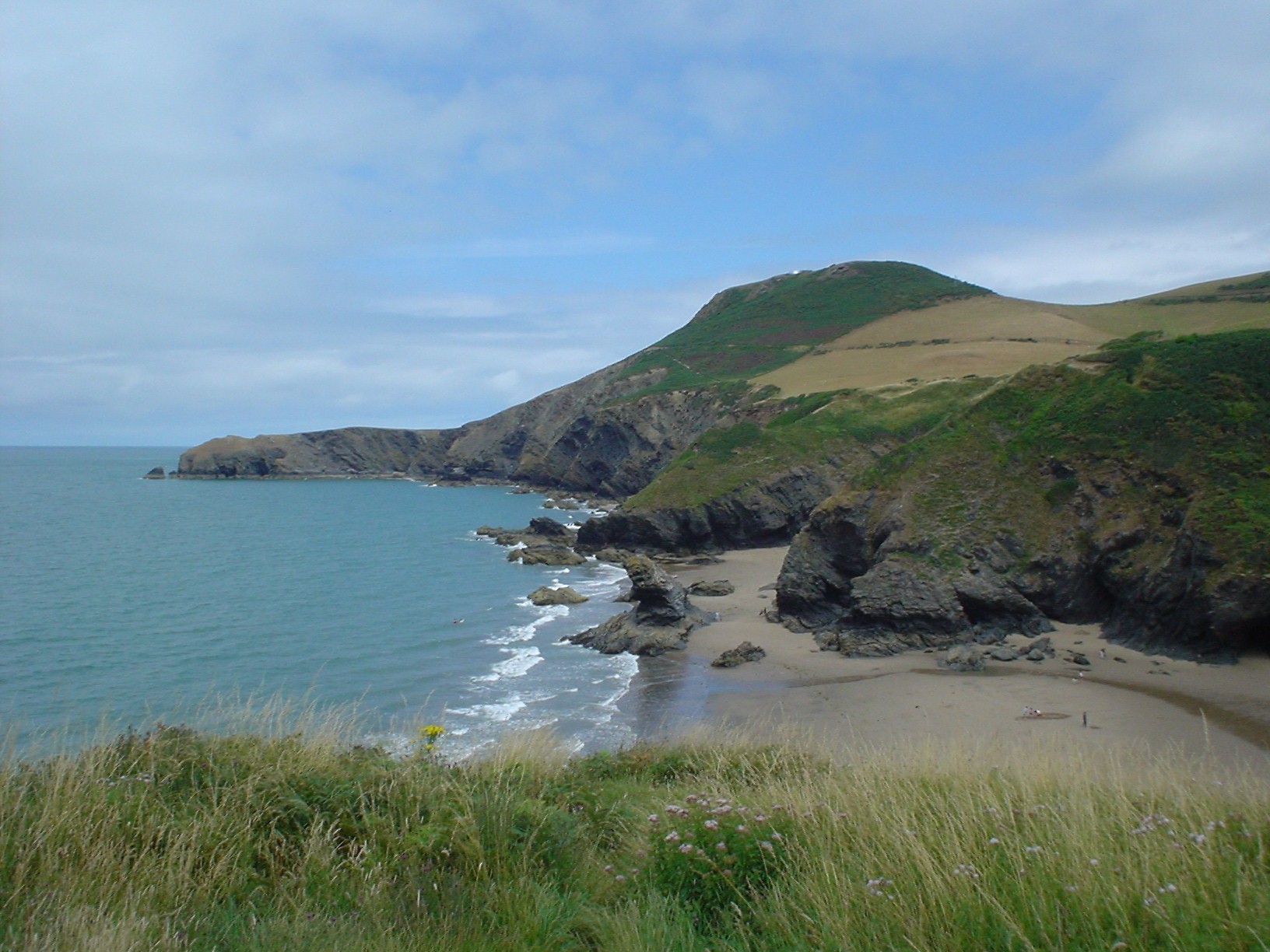
Was there already a kind of organization for Shiatsu in the UK at that time and did you get involved in its organisation straight away ?
We were very proud of the Shiatsu Society UK, the first professional society in Europe, established in 1981. It was born on those Tuesday mornings at Michael Rose’s flat, where a number of Shiatsu students and practitioners would come to practice on each other. We realised that we were the fore-runners of a profession and we should have a professional union. I was at most of the Tuesday mornings and I was a founding member of the Shiatsu Society and attended its meetings and voted, etc. But I am not an admin person, in fact I am pretty terrible at admin, so I never had an administrative role in the Society, though I did serve on the Assessment Panel for several years.
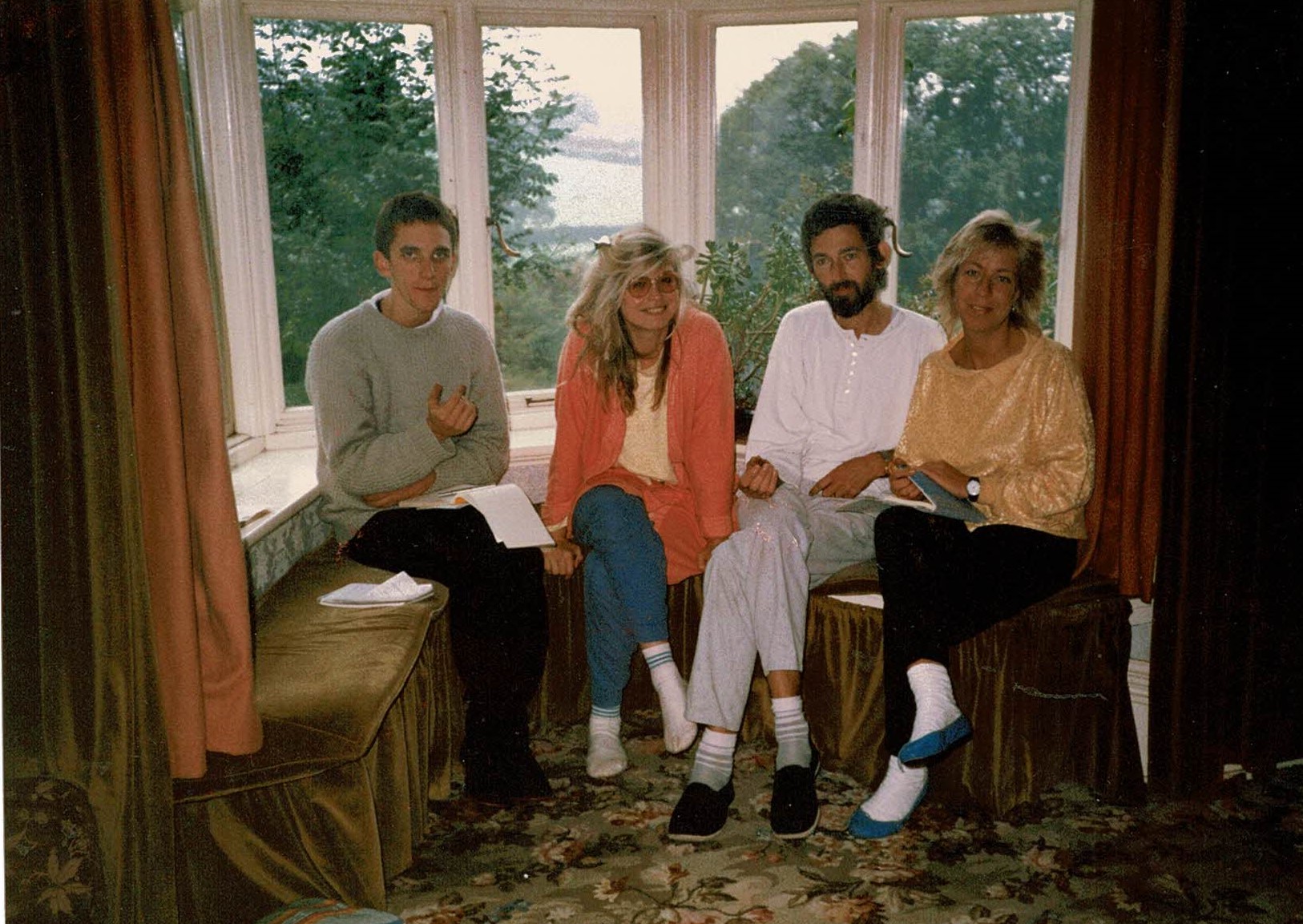
Do you keep a precise memory of your first years of practice ? How have you evolved over time ?
That is such an interesting question. Of course I have evolved, over 44 years of practice. We all evolve, from those first stilted beginners’ attempts. And yet I know, from receiving Shiatsu all my life, how different each person’s unique style is, and it is because of their essential essence, not any techniques they have learned. I am a physically affectionate, snuggly sort of person, so I imagine my Shiatsu has always been warm and physical. I myself like a strong Shiatsu, with body weight behind it, so that is what I give. But, contradictorily, I am also fairly cerebral and easily lose touch with that state of the body and soul relaxation which makes for good Shiatsu, and then I can become quite directive, maybe insensitive. The major changes in my style have been a result of inner changes, of letting go. I have also recognized, observing my own responses, how important it is to follow one’s bliss – the pleasure we can feel when we connect with an area that needs our touch. I call this « selfish Shiatsu » but of course the areas that give us pleasure to touch are usually the areas where the receiver has the opportunity to heal. Most recently, I was working with no rules, maybe no Hara diagnosis, no kyo-jitsu, just looking to find what interested me as I went through my treatment framework. Moving my responses from my head to my heart is a discipline I began to practice in the last decade or two. At some point I also learned to recognize space within the receiver’s body, which connected to my Buddhist meditation practice in which I found space within my own body.
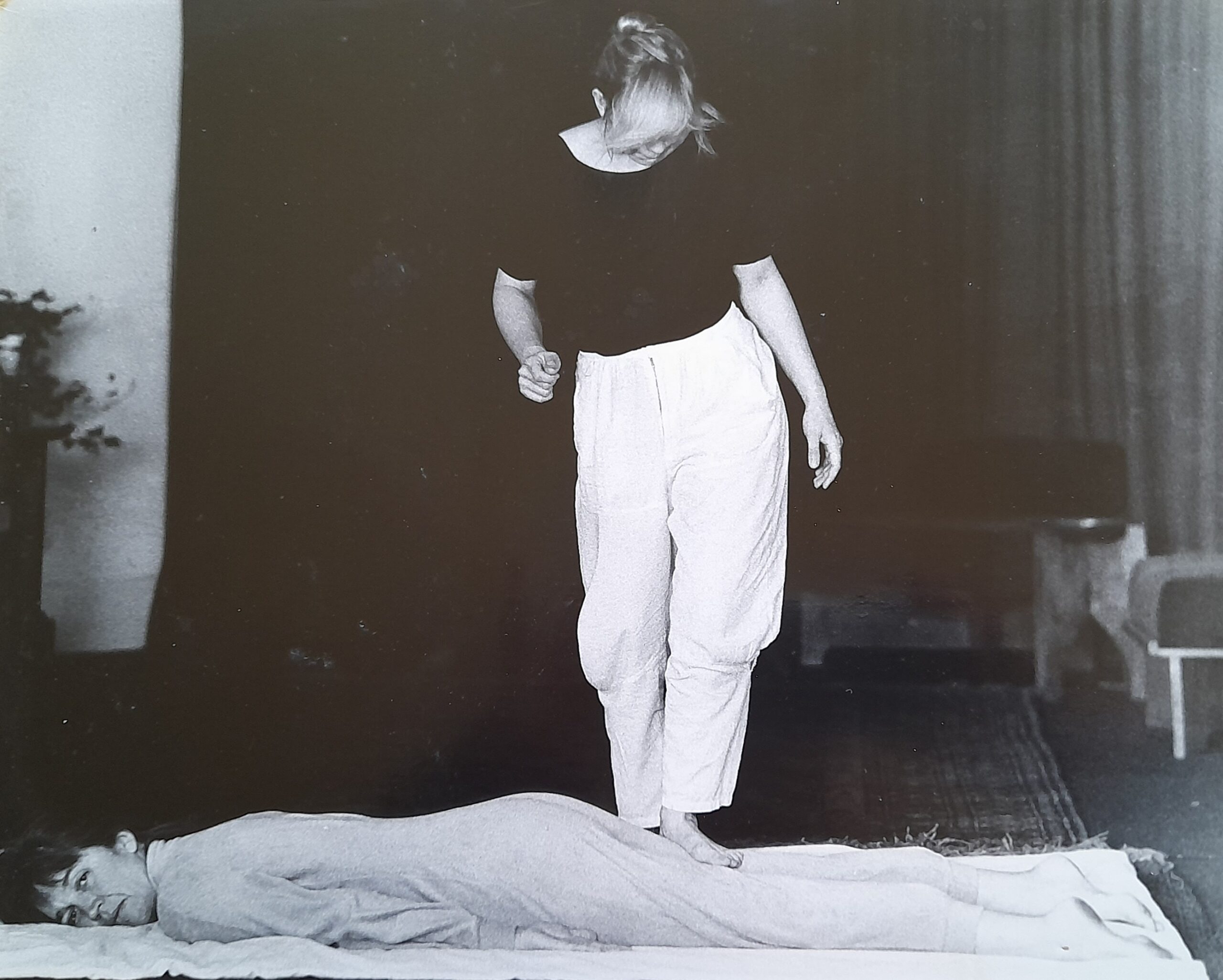
Do you still teach your Master’s Shiatsu or have you emancipated from it ? (If yes) Were there pivotal moments in this evolution ?
My training was so eclectic, with diverse teachers, that I cannot claim any particular Master’s style. And I think I have always recognized that my Shiatsu was my own style. It never worked, to try to do Shiatsu like Michael Rose or Pauline Sasaki. It made me feel like I was trying to be someone else, I lost touch with myself and the session was always terrible. I think a pivotal moment for me was during a workshop with a healer, nothing to do with Shiatsu, but at one point he asked us to hold a partner’s neck and occiput. I thought « Ah, neck treatment, I can do this ». The teacher came rushing up, horrified and said « You are TREATING her ! » He said it needed to be as if my partner were influencing me, as much as me influencing her. So then I realised that in the healing dance nobody is specifically imposing anything on anybody. This infuenced me a lot, and it connected somehow with the earliest lesson I learned from Ohashi, about relaxing physically into the Shiatsu contact . Another pivotal moment came from an interview I did for the Shiatsu Society Journal, some time in the mid-Eighties. I had heard about a woman who did Shiatsu with horses : Pamela Hannay (11) was a tiny American redhead who gave a wonderful interview in which she described her first encounter with a racehorse in romantic movie terms – « As I entered the stable, you know how it is, the lights go up and the music changes ». I remembered those words forever and they influenced my understanding of Ki – it is not only movement within a given location of pathways but an immersive emotional experience. Pamela’s image sowed a seed in my consciousness that opened me up to feelings. I think also another important time came when I began, in my teaching, to speak about my sensations as I demonstrated Shiatsu in front of the class. It was challenging, my sensations sometimes seemed random and meaningless but they were my sensations and I had to trust them and speak them out aloud. In the end, like the plot of a novel, everything usually acquired a meaning and contributed to the outcome of the session, and I gained confidence from that confirmation of my intuitive sensing.
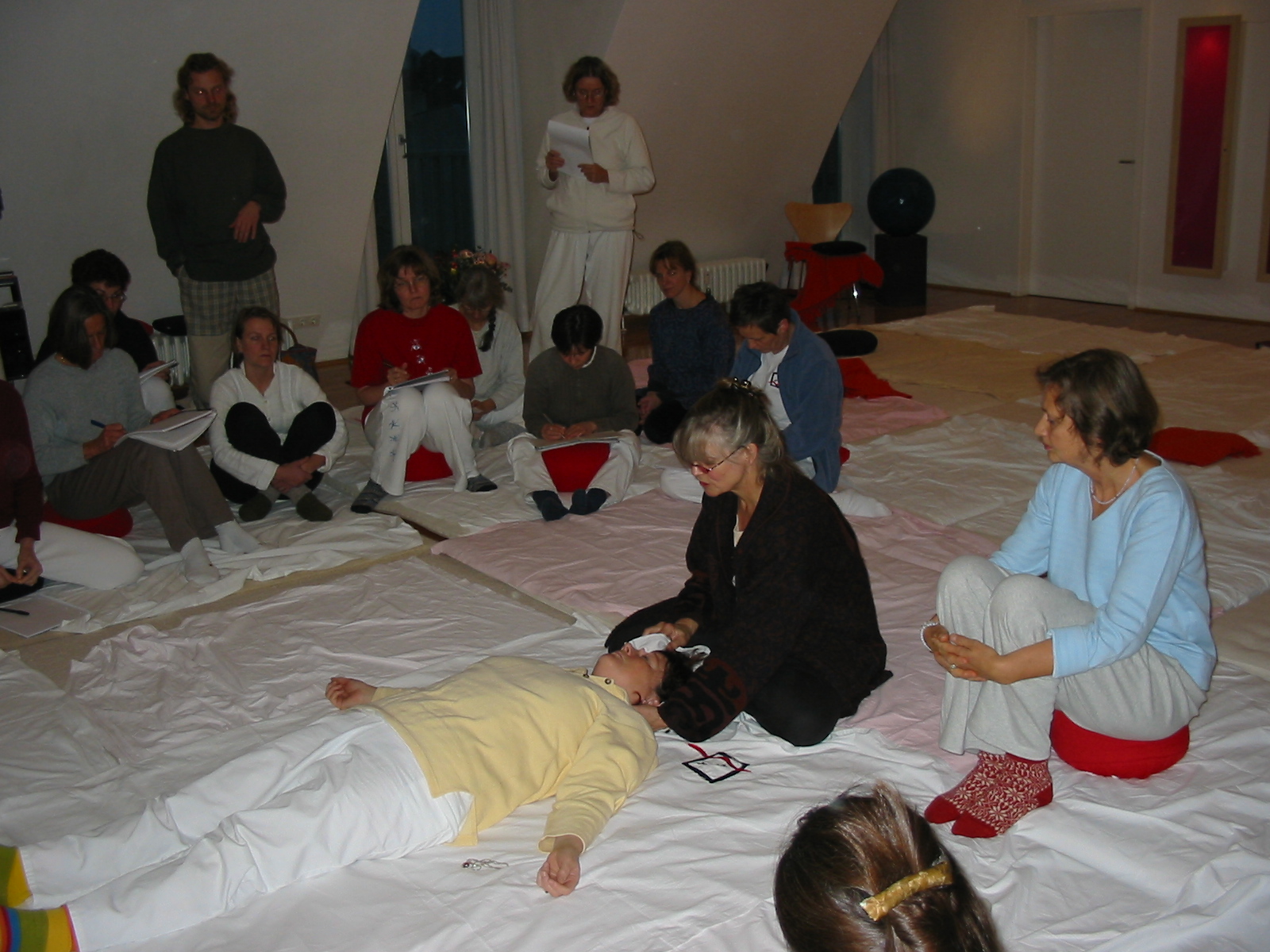
Do you claim a specific style, like Zen Shiatsu, or another one ?
Most of us in Europe do Zen Shiatsu style, whatever the theory we link it to. If we use a mother hand and have some basic sense of looking for empty, weak places as well as tense ones, we are doing Zen Shiatsu. That was what Ohashi taught, and he influenced hundreds of European students at the beginning of Europe’s Shiatsu story. He got it from Masunaga, with whom he had studied briefly.
But we are also all influenced by the theory we learned, and I have had a great deal of theory input, from all my various teachers and also from my acupuncture training. My understanding of the meridian network and its functions is a combination of Masunaga’s amoeba and the primary philosophical concepts of TCM, such as Essence and Shen, Heaven and Earth.
When did you start writing this book « Shiatsu Theory and Practice » (1) and what was your ambition ?
I began writing it in 1993 and it took about a year. I was on maternity leave from teaching and practicing, and I had a nanny to look after my baby in the mornings while I wrote.
My aim was to bring together the different strands of Shiatsu theory and try to make a coherent whole in which the different branches were all ultimately saying the same thing rather than contradicting each other. So I needed to explore and make sense of Masunaga’s theory, which was not well known at the time. The book « Zen Shiatsu » was not much help : it was an early work of Masunaga’s, and he had not yet finished working his theory out. The meridian functions that Pauline had given us were sketchy. My main source of understanding was the one-page diagram showing the amoeba executing the functions of all the meridians – Masunaga had actually given us this page in the seminar I attended, but I wasn’t ready to understand it. Now I realised what he was telling us – the amoeba manifests the meridians in locations that express the meridian’s function. The Stomach on the front moves us forward to what we want, the Bladder on the back moves us away from what we fear, are simple examples. I delved into Japanese interpretations of the Chinese model, ventured into the theory of connective tissue and it did indeed all begin to make sense. I began to see the Ki in the meridian network as emerging from the individual’s core, moving the person as flowingly as an amoeba into and away from physical and emotional states and life situations and I tried to express this in the book. What was lacking in Masunaga’s theory, a central motive force to generate the meridians, would be supplied later by Lao Tzu and Chinese medical theory.
When was its first edition ? Did you feel that you had satisfied the initial ambition ?
The first edition came out in 1996. I was pleased with it, although now I am rather horrified at how prescriptive it is, and how full of methods and protocols. But I had modeled myself on Giovanni Maciocia, whose clarity made such a difference to the understanding of TCM. It was a good starting point. The second edition was much softer and more allowing, it reflected more of the Shiatsu state of mind; and in the third edition I allowed myself to speak as myself and get rid of some of the rules. The problem is that students need rules and frameworks at the beginning of their studies, so no textbook can eliminate them entirely ! The best part of the book, then as now, I think, are the drawings by Lynn Williams. He had to take a lot of anatomy instruction from me but I think the result is beautiful and really useful to students.
Several translations followed. It is a reference. In how many languages is it available today ?
I am not sure. German, French, Spanish (maybe – first edition only), Czech. Dutch and Italian are definitely now out of print.
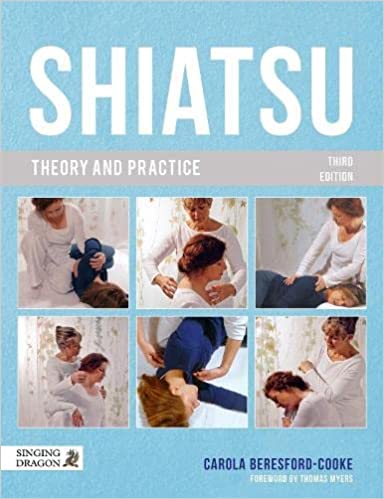
This is a text with obvious educational virtues, immediately useful to a student and a young Shiatssushi, and it is also an opportunity for you to express your wish to see Shiatsu evolve, so that it does not remain captive to the tradition. You are particularly interested in studies on magnetic fields, as one of the disciplines to be explored. Is it for you a question of scientifically validating the theory of Qi or of imagining other ways of treatments to harmonize this Qi ?
It is difficult to harmonize modern scientific thinking with East Asian medical philosophy because modern scientific thinking is actually not very scientific as it does not explore new thinking. It is like exploring a new territory via a railway – you go into new territory but you are on a fixed track, not wandering into the wilderness itself. But the theory of fields makes sense to me, because we can experience our fields when doing Qigong etc. The field seems almost like a metaphor for Ki, and I often use the phrase « Ki-field ».
The idea of the human field is not so very far out – everything has a field, whether it is a washing machine or a cat, a magnet or a tree, and the human electro-magnetic field is the basis of some modern medical techniques like electrocardiography etc.. But it is the ways in which these fields may interact together that is interesting in the context of Shiatsu. Rupert Sheldrake has done work on « the sensation of being stared at », which must be a field effect. But science shies away from anything involving consciousness, and this is a block that will not easily be shifted.
I have been very impressed by the work of Dr. James Oschman, who has suggested a compelling theory on the importance of connective tissue in carrying messages and information throughout the body via its crystalline structure. This was a big influence on Kiiko Matsumoto and Stephen Birch in explaining the movement of Qi, and they relate connective tissue to the Triple Heater, which is convincing to me on many levels. Giovanni Maciocia also explores the TCM understanding of connective tissue as Bao, the « intimate envelopes » and Gao Huang, the « fatty membranes ». This idea of the movement of information and messages within the physical substance of the body, traversing boundaries, connecting diverse systems and filling the whole body space, is so like the concept of Qi.
Embryology is also a fascinating area and very relevant to the development of the meridians. It’s become more recognized because of Daniel Keown‘s book, « The Spark in the Machine » (13), but to be honest I am not sure that Dr. Keown explores the subject deeply. I have found Phillip Beach‘s book, « Muscles and Meridians » (14) to be a gateway into a very deep understanding of the importance of the embryological stage in the development of the energy body, as well as the physical body. Though Beach stays with the science, I have my own metaphysical interpretations of embryology; I have the image of a newly arrived spirit, insubstantial and unfamiliar with the human realm, constructing itself a space-suit, the body, to clothe it and move it into human life – and it does this in the embryo stage.
For me, when Shiatsu adopts science, it needs to be science rooted in the basics of the body. I’m not so attracted to thought waves and quantum particles. I’m also a traditionalist, in that I like to find connections between modern science and classical Asian medical philosophy. I would like Shiatsu to keep its links with its roots (which are, admittedly, many) as well as venturing into polyvagal theory (15), somatic empathy and the other new ways it is going.
In the world of Shiatsu, there are 80% of women who are practitioners and yet very few are or have been teachers. You, as a pioneer woman in the teaching of Shiatsu, how do you understand that ?
I partly addressed this question above, when you asked me about the position of women in the early days of Shiatsu. I’m not really a pioneer woman, Pauline Sasaki and Shizuko Yamamoto were pioneers. I’m from the next generation, and there are a good number of us, though not nearly enough. Actually, when I reflect on it, I can think of fifteen outstanding female teachers, without even trying. And yet the Shiatsu world still appears to be largely male-dominated, probably because women mostly present themselves more quietly and tend not to push their ideas forward. The world of Shiatsu teaching is a jungle, you know, even though we preach peace, humility and love, and many women prefer to keep their heads down and just teach what they do, quietly.
When you say you can name fifteen exceptional female teachers in the world of Shiatsu. Would you specify which ones? You already mentioned Pauline Sasaki, Pamela Hannay, Elaine Liechti, Susan Krieger, Shizuko Yamamoto, Elise Johnson, Nicola Ley… and of course we put you on the list. Which makes 8 names at this stage. We would love to have more.
Well, three of the female teachers you mention have died. Did I say exceptional ? I haven’t experienced all of their teaching first-hand, but I have heard of all of them and respect their work. Some run their own schools, some have written books. Most of us are second generation, not pioneers, but the ones I was thinking of are :
Suzanne Yates (16), Pamela Ferguson (17), Patrizia Stefanini, Gabriella Poli, Brigitte Ladwig, Dinah John, Elaine Lietchi, Nicola Ley, Kindy Kaur, Pia Staniek, Katrin Schroeder, Joyce Vlaarkamp (18), Laura Davison, Tamsin Grainger (19), Barbara Aubry Anemone. That’s fifteen. Plus I forgot Antigoni Tsegeli from Greece, Fanny Roque from France (president of the French Shiatsu Association, no less), Ulrike Schmidt, who runs the Zen Shiatsu School in Berlin, Jitske Dijkstra and Edmee Gosselink who both run schools in Holland. Add on Alice Whieldon (6), who started with Shiatsu and does Seiki now, we have twenty.
From your experience, would you say that women are more apt to practice Shiatsu? Why are more of them practicing ?
Women are interested in bodies more than men. I am generalizing wildly here, and I am sure that none of this is politically correct in our gender-diverse time, but there is a basis for my theory. Women’s bodies change every month, women bear children and respond viscerally to the needs of their offspring. Because of our changing hormones and maternal potential, we are built to be sensitive to bodies, our own and others. So methods of touch to heal appeal more to women. Shiatsu is also an opportunity to be closely intimate with another person, within a safe and defined therapeutic space. Many women find this intimacy lacking in their close relationships. But in the Shiatsu world there are still more men than there are, for example, in the world of aromatherapy massage, which is almost exclusively female.
I know you are now retired. So, after all these years of practice and class, does Shiatsu still feed you ? What do you think were the biggest lessons that Shiatsu taught you ?
I think the training in awareness that helps us to see the whole of a person, beyond the surface, has stayed with me. The self-development exercises and the training in sensing my own body and its Ki remain with me. Of course I am much better able to deal with my own health problems and those of my loved ones. And, together with my Buddhist practice, Shiatsu philosophy has helped me feel my connection with the whole of creation. Without Shiatsu , my life would have been poorer and my world smaller.
In conclusion, what message would you send (in addition to the book) to a student, or a young Shiatsu practitioner ?
Do Shiatsu ! Do lots of Shiatsu ! No matter if you have only done one weekend, just get people down on the floor and crawl on them ! Really, just simply doing a routine again and again teaches your hands and body much more than you would believe.
Don’t try too hard to understand or direct. Relax !
And also, always say Yes to what you experience, don’t deny it and think you didn’t feel it after all. But keep it simple, just respond in the moment and don’t tell yourself stories about it. Just stay present with the pure experience.
Thank you very much for answering our questions.
Thank you !
1 – « Shiatsu Theory and Practice » 3rd edition – Carola Beresford-cooke – Singing Dragon – 2011.
2 – Bill Palmer, founder of Movement Shiatsu, see Bill Palmer’s Youtube channel.
3 – Elaine Lietchi is the author of « Natural Ways to Health – Shiatsu – the Japanese Healing Art of Touch for Health » – Time Life Books – 1998.
4 – See Yuichi Kawada’s interview series by Chris McAlister (European Shiatsu Fededration) . Episodes 1, 2, 3 and 4.
5 – « Barefoot Shiatsu: Japanese Art of Healing the Body Through Massage » – Shizuko Yamamoto – Japan Publication Inc – 2000
6 – « Sei-Ki: Life in Resonance – The Secret Art of Shiatsu » – Akinobu Kishi, Alice Whiledon – Singing Dragron – 2011
7 – « Tao Shiatsu: Life Medicine for the 21st Century » – Kyoryu Endo – Independently Published – 2013
8 – « The New Book of Shiatsu: Vitality and health through the art of touch » – Paul Lundberg – Gaia Editions – 2014
9 – « Tales of 100 treatments » – Shizuto Masunaga – Shiatsu Editore Milano – 2020
10 – This is not entirely accurate, although the idea is correct. Here you will find two interviews with Leisa Bellmore (The first in French. The second is available in english), one with Elisa Carpiaux, and another with Betty Croll. The next woman to come, after Carola Bereford-Cooke, will be Suzanne Yates.
11 – « Shiatsu Therapy for Horses: Know Your Horse and Yourself Better Through Shiatsu » – Pamela Hannay – J.A.Allen & Co – 2002
12 – « Energy Medicine: The Scientific Basis » – James L. Oschman – Churchill Livingstone Editions – 2000
13 – « The spark in the machine : How the Science of Acupuncture Explains the Mysteries of Western Medicine » – Dr Daniel Keown – Singing Dragon – 2014
14 – « Muscles & Meridians – The Manipulation of Shape » Phillip Beach – Churchill Livingstone – 2010
15 – The polyvagal theory was developed by Stephen Porges and highlights the link between the autonomic nervous system, emotions and physiological functions of the body. « The Polyvagal Theory: Neurophysiological Foundations of Emotions, Attachment, Communication, and Self-regulation » – Stephen Porges – WW Norton – 2011
16 – « Shiatsu for Midwives » – Suzanne Yates – Foreword by Tricia Anderson – Books for Midwives – 2003
17 – « The Self-shiatsu Handbook: Easy Techniques for Drug-Free Pain Relief and to Improve Your Own Wellbeing » – Pamela Ferguson – Newleaf – 1996
18 – « Shiatsu in uitvoering » – Joyce Vlaarkamp – Altamira – Becht . Haarlem – 2004
19 – « Working with Death and Loss in Shiatsu Practice: A Guide to Holistic Bodywork in Palliative Care » – Tamsin Grainger – Singing Dragon – 2020
